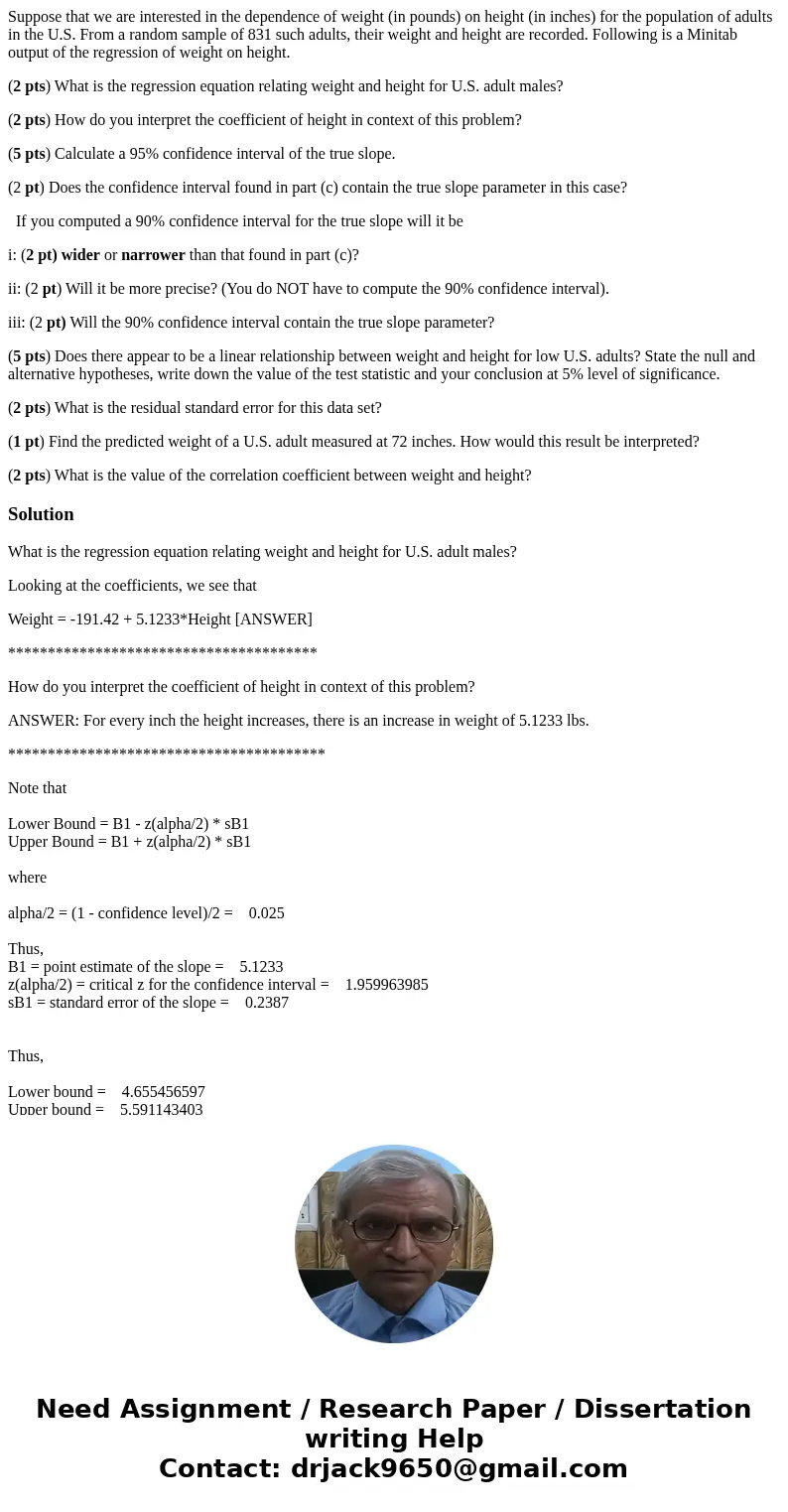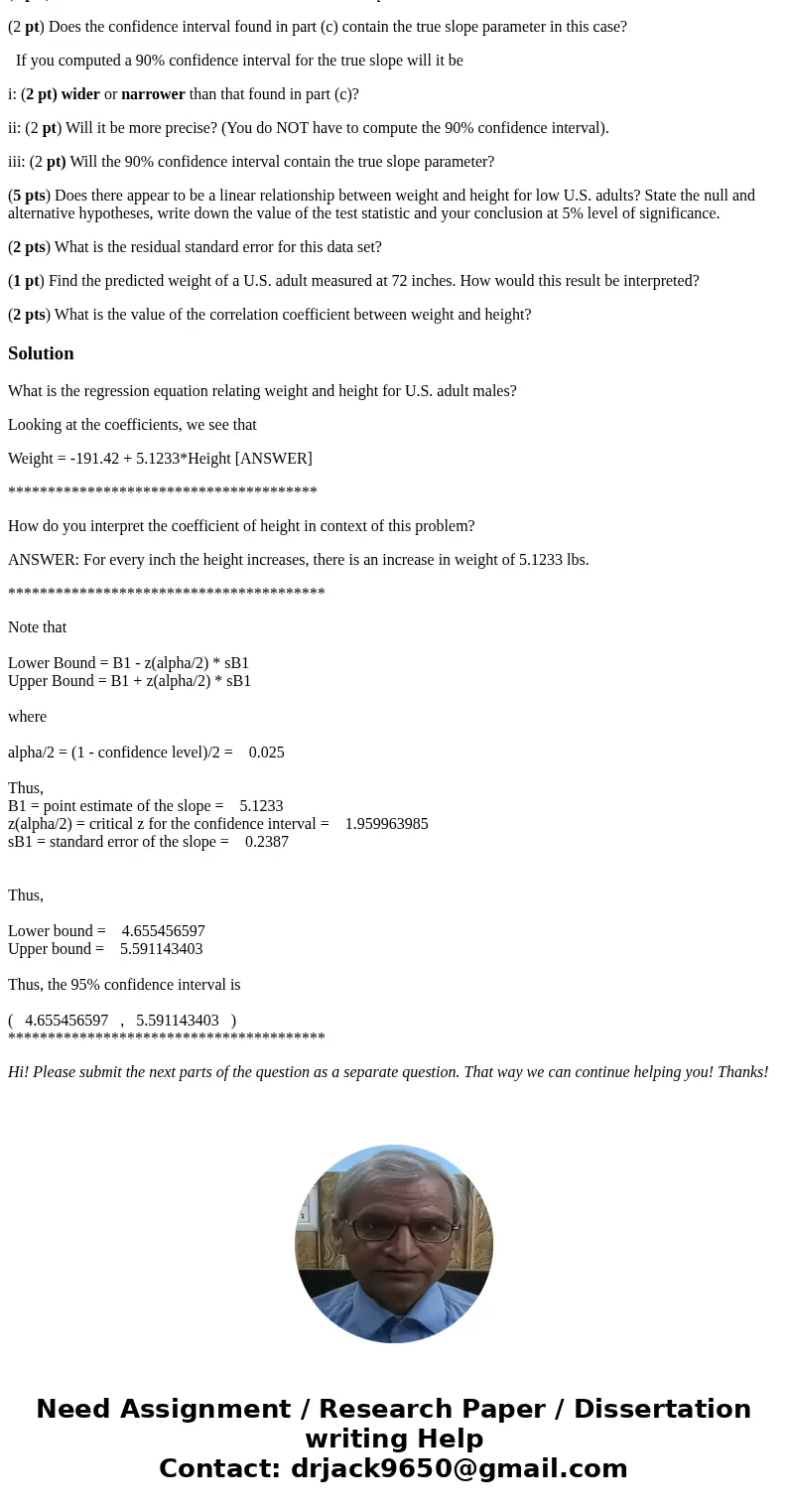Suppose that we are interested in the dependence of weight i
Suppose that we are interested in the dependence of weight (in pounds) on height (in inches) for the population of adults in the U.S. From a random sample of 831 such adults, their weight and height are recorded. Following is a Minitab output of the regression of weight on height.
(2 pts) What is the regression equation relating weight and height for U.S. adult males?
(2 pts) How do you interpret the coefficient of height in context of this problem?
(5 pts) Calculate a 95% confidence interval of the true slope.
(2 pt) Does the confidence interval found in part (c) contain the true slope parameter in this case?
If you computed a 90% confidence interval for the true slope will it be
i: (2 pt) wider or narrower than that found in part (c)?
ii: (2 pt) Will it be more precise? (You do NOT have to compute the 90% confidence interval).
iii: (2 pt) Will the 90% confidence interval contain the true slope parameter?
(5 pts) Does there appear to be a linear relationship between weight and height for low U.S. adults? State the null and alternative hypotheses, write down the value of the test statistic and your conclusion at 5% level of significance.
(2 pts) What is the residual standard error for this data set?
(1 pt) Find the predicted weight of a U.S. adult measured at 72 inches. How would this result be interpreted?
(2 pts) What is the value of the correlation coefficient between weight and height?
Solution
What is the regression equation relating weight and height for U.S. adult males?
Looking at the coefficients, we see that
Weight = -191.42 + 5.1233*Height [ANSWER]
***************************************
How do you interpret the coefficient of height in context of this problem?
ANSWER: For every inch the height increases, there is an increase in weight of 5.1233 lbs.
****************************************
Note that
Lower Bound = B1 - z(alpha/2) * sB1
Upper Bound = B1 + z(alpha/2) * sB1
where
alpha/2 = (1 - confidence level)/2 = 0.025
Thus,
B1 = point estimate of the slope = 5.1233
z(alpha/2) = critical z for the confidence interval = 1.959963985
sB1 = standard error of the slope = 0.2387
Thus,
Lower bound = 4.655456597
Upper bound = 5.591143403
Thus, the 95% confidence interval is
( 4.655456597 , 5.591143403 )
****************************************
Hi! Please submit the next parts of the question as a separate question. That way we can continue helping you! Thanks!


 Homework Sourse
Homework Sourse